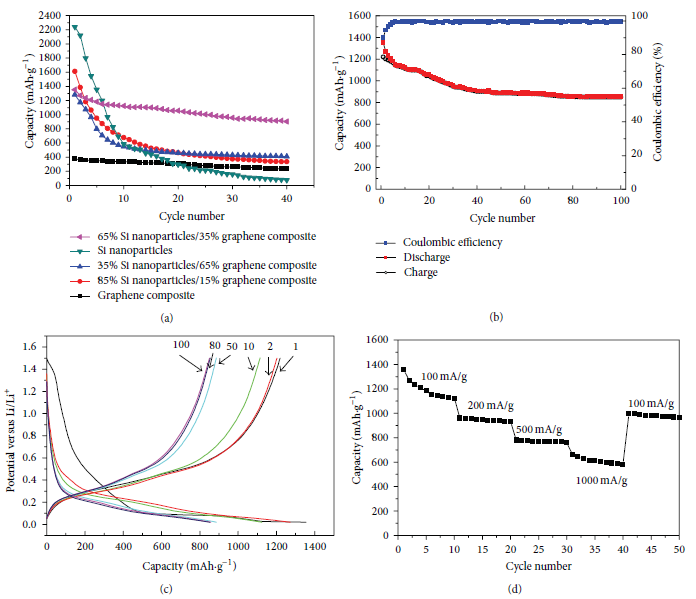
Silicon nanoparticles have been successfully inserted into graphene sheets via a novel method combining freeze-drying and thermal reduction. The structure, electrochemical performance, and cycling stability of this anode material were characterized by SEM, Xray diffraction (XRD), charge/discharge cycling, and cyclic voltammetry (CV). CV showed that the Si/graphene nanocomposite exhibits remarkably enhanced cycling performance and rate performance compared with bare Si nanoparticles for lithium ion batteries. XRD and SEM showed that silicon nanoparticles inserted into graphene sheets were homogeneous and had better layered structure than the bare silicon nanoparticles. Graphene sheets improved high rate discharge capacity and long cycle-life performance. The initial capacity of the Si nanoparticles/graphene keeps above 850mAhg−1 after 100 cycles at a rate of 100mAg−1. The excellent cycle performances are caused by the good structure of the composites, which ensured uniform electronic conducting sheet and intensified the cohesion force of binder and collector, respectively.

